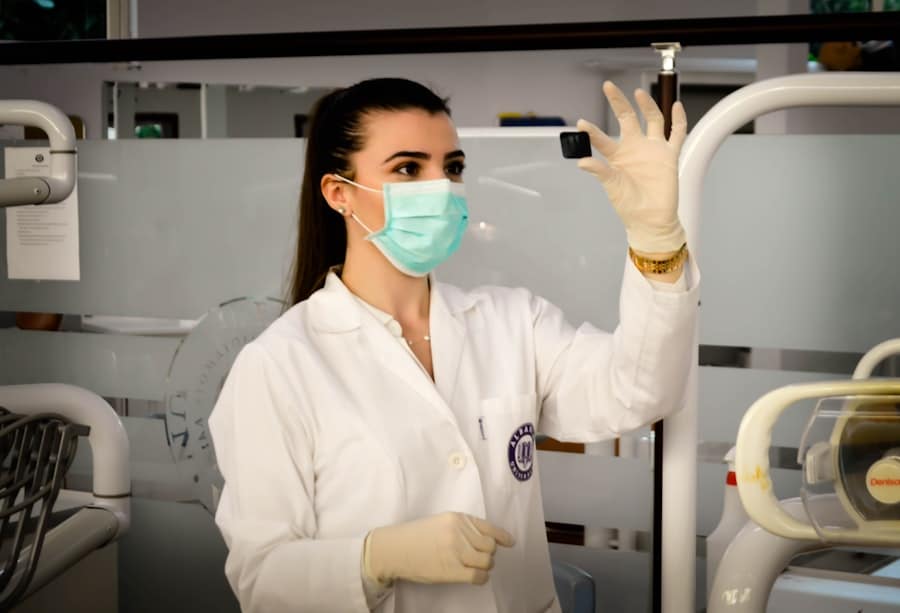In the rapidly evolving landscape of healthcare, dental practices are increasingly turning to specialized software tools to enhance their operational efficiency and improve patient care.
As the demand for high-quality dental care continues to rise, the integration of advanced software solutions has become essential for practices aiming to remain competitive and deliver exceptional patient experiences.
The relevance of dental software tools in today’s healthcare IT environment cannot be overstated. With the growing emphasis on patient-centered care, practices are seeking innovative ways to manage their workflows effectively while ensuring compliance with regulatory standards. The right dental software can not only facilitate smoother operations but also empower dental professionals to focus more on patient care rather than administrative tasks.
As we delve deeper into the functionalities and benefits of dental software, it becomes clear that these tools are indispensable for modern dental practices striving for excellence.
Key Takeaways
- Dental software tools are essential for streamlining patient management, enhancing treatment planning and diagnosis, improving patient communication and engagement, leveraging data analytics, ensuring compliance and security, and integrating with practice management systems.
- Dental software helps in streamlining patient management by automating appointment scheduling, managing patient records, and facilitating billing and insurance claims.
- Treatment planning and diagnosis are enhanced with dental software through features like 3D imaging, digital impressions, and CAD/CAM technology for precise and efficient treatment.
- Patient communication and engagement are improved with dental software by enabling online appointment booking, sending automated reminders, and providing patient education materials.
- Data analytics in dental software helps in tracking patient outcomes, identifying trends, and making informed decisions for better patient care.
Streamlining Patient Management with Dental Software
Enhancing Operational Efficiency
Dental software features such as online appointment scheduling, automated reminders, and electronic health records (EHR) enable practices to significantly enhance their operational efficiency. Moreover, dental software provides a centralized platform for storing patient information, which can be accessed by authorized personnel at any time.
Improving the Patient Experience
This centralized platform not only improves the accuracy of patient records but also enhances the overall patient experience. For instance, when patients arrive for their appointments, staff can quickly retrieve their medical history and treatment plans, ensuring that they receive personalized care tailored to their specific needs.
A More Organized and Patient-Friendly Environment
By minimizing wait times and improving the flow of information, dental software contributes to a more organized and patient-friendly environment. This results in a more efficient and effective dental practice that can provide better care to its patients.
Enhancing Treatment Planning and Diagnosis

Dental software tools play a crucial role in enhancing treatment planning and diagnosis. Advanced imaging capabilities integrated into these systems allow dental professionals to visualize complex cases more effectively. For example, 3D imaging and digital radiography enable practitioners to assess a patient’s oral health with greater precision, leading to more accurate diagnoses and treatment plans.
This technological advancement not only improves clinical outcomes but also fosters greater trust between patients and their providers. Additionally, many dental software solutions offer treatment planning modules that facilitate collaboration among dental teams. These modules allow practitioners to create comprehensive treatment plans that can be easily shared with patients for discussion and approval.
By involving patients in the decision-making process, dental professionals can enhance patient satisfaction and adherence to treatment recommendations. Furthermore, the ability to simulate treatment outcomes using digital models can help patients visualize the benefits of proposed procedures, ultimately leading to more informed choices regarding their oral health.
Improving Patient Communication and Engagement
Effective communication is a cornerstone of successful dental practice management, and dental software tools are designed to enhance this critical aspect. Many systems include features such as secure messaging platforms that allow for direct communication between patients and providers. This capability not only fosters a sense of connection but also enables patients to ask questions or express concerns without the need for an in-person visit.
Automated follow-up messages can remind patients about upcoming appointments or encourage them to schedule routine check-ups. By keeping patients informed and engaged in their oral health journey, practices can improve retention rates and encourage proactive care behaviors.
This proactive approach not only benefits patients but also contributes to the overall success of the practice.
Leveraging Data Analytics for Better Patient Outcomes
The integration of data analytics into dental software tools represents a significant advancement in the field of dentistry. By harnessing the power of data, dental practices can gain valuable insights into patient trends, treatment efficacy, and operational performance. For instance, analytics can help identify patterns in patient demographics or treatment outcomes, enabling practices to tailor their services to meet the specific needs of their communities.
Furthermore, data analytics can assist in monitoring key performance indicators (KPIs) such as appointment cancellations, treatment acceptance rates, and revenue cycles. By analyzing these metrics, practices can identify areas for improvement and implement targeted strategies to enhance overall performance. For example, if a practice notices a high rate of missed appointments, it may choose to implement more robust reminder systems or offer flexible scheduling options.
Ultimately, leveraging data analytics empowers dental professionals to make informed decisions that lead to better patient outcomes.
Ensuring Compliance and Security with Dental Software

Data Security Regulations
In today’s digital age, data breaches and cyber threats are increasingly common, making it crucial for dental practices to prioritize compliance and security when utilizing software tools. To ensure the protection of patient information, dental software must adhere to strict regulations such as the Health Insurance Portability and Accountability Act (HIPAA). This requires practices to implement robust security measures, including encryption, access controls, and regular security audits.
Compliance Beyond Data Security
Compliance extends beyond data security to encompass proper documentation and record-keeping practices. Dental software can play a vital role in maintaining compliance by automating documentation processes and providing templates for required forms. This not only reduces the risk of human error but also ensures that practices remain compliant with regulatory standards.
Protecting Patients and Reputations
By prioritizing compliance and security through the use of reliable dental software, practices can protect their patients’ sensitive information while safeguarding their reputations. This is essential in building trust with patients and maintaining a strong reputation in the dental community.
Integrating Dental Software with Practice Management Systems
The integration of dental software with existing practice management systems is essential for maximizing efficiency and ensuring seamless operations. Many modern dental software solutions offer compatibility with popular practice management platforms, allowing for a unified approach to managing patient information and workflows. This integration eliminates the need for duplicate data entry and reduces the risk of errors associated with manual processes.
For example, when a new patient is added to the practice management system, their information can automatically populate within the dental software, streamlining the onboarding process. Additionally, integrated systems enable real-time updates on patient status, billing information, and treatment progress, ensuring that all team members have access to accurate data at all times. By fostering collaboration among different departments within a practice, integrated dental software enhances overall efficiency and improves patient care delivery.
Future Trends in Dental Software for Patient Care
As technology continues to advance at a rapid pace, several emerging trends are shaping the future of dental software in patient care. One notable trend is the increasing adoption of artificial intelligence (AI) in diagnostic processes. AI-powered tools can analyze vast amounts of data quickly and accurately, assisting dentists in identifying potential issues that may be overlooked during manual assessments.
This technology has the potential to revolutionize early detection and intervention strategies in dentistry. Another trend is the rise of tele-dentistry solutions that enable remote consultations between patients and providers. As telehealth becomes more mainstream across various healthcare sectors, dental practices are beginning to embrace this model as well.
Tele-dentistry allows practitioners to conduct virtual consultations, follow-ups, and even preliminary assessments without requiring patients to visit the office physically. This flexibility not only enhances access to care but also caters to patients’ preferences for convenience. In conclusion, dental software tools are transforming the way dental practices operate by streamlining patient management processes, enhancing treatment planning, improving communication, leveraging data analytics, ensuring compliance, integrating with practice management systems, and embracing future trends like AI and tele-dentistry.
For healthcare professionals and IT decision-makers in dentistry, investing in robust dental software solutions is essential for delivering high-quality care while maintaining operational efficiency. By staying informed about emerging technologies and best practices in dental software utilization, practices can position themselves for success in an increasingly competitive landscape. Key Takeaways:
– Dental software tools streamline operations by automating administrative tasks.
– Enhanced treatment planning capabilities improve diagnostic accuracy.
– Effective communication fosters better patient engagement.
– Data analytics provide insights for improved patient outcomes.
– Compliance with regulations like HIPAA is critical for protecting patient information.
– Integration with practice management systems enhances workflow efficiency.
– Emerging trends such as AI and tele-dentistry are shaping the future of dental care.
By embracing these advancements in dental software technology, practices can not only improve their operational efficiency but also elevate the standard of care they provide to their patients.
Revolutionizing Patient Care with the Best Dental Software Tools is crucial for improving efficiency and quality of care in dental practices. However, it is equally important to ensure that the IT infrastructure supporting these tools is secure and reliable. In a related article, How to Choose a Trustworthy Cybersecurity Services Company, Tech Rockstars provides valuable insights on selecting a reliable cybersecurity services provider to protect sensitive patient data and ensure smooth operations in healthcare settings. By partnering with a trustworthy IT company, dental practices can enhance patient trust and confidence in their services.
FAQs
What are dental software tools?
Dental software tools are computer programs designed to assist dental professionals in managing patient records, scheduling appointments, billing, and other administrative tasks. They can also include features for clinical charting, imaging, and treatment planning.
How do dental software tools revolutionize patient care?
Dental software tools revolutionize patient care by streamlining administrative tasks, improving communication between dental professionals and patients, and enhancing clinical efficiency. They also enable better treatment planning and coordination, leading to improved patient outcomes.
What are some key features of the best dental software tools?
The best dental software tools typically include features such as electronic health records (EHR) management, appointment scheduling, billing and insurance processing, clinical charting, imaging integration, patient communication tools, and reporting and analytics capabilities.
How do dental software tools improve practice efficiency?
Dental software tools improve practice efficiency by automating routine administrative tasks, reducing paperwork, minimizing errors, and enabling better organization and communication within the dental team. This allows dental professionals to focus more on patient care and less on administrative burdens.
What are the benefits of using dental software tools for patients?
Patients benefit from dental software tools through improved communication with their dental providers, easier appointment scheduling, access to their health records and treatment plans, and a more streamlined and efficient care experience. This can lead to better patient satisfaction and outcomes.


